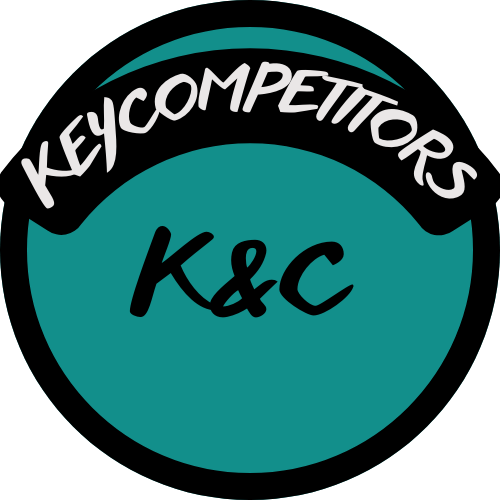Understanding The Market That Home Goods Is In
The home décor retail market is brimming with competition, and Home Goods competitors are constantly innovating to attract shoppers and secure their share of this dynamic industry. HomeGoods, a subsidiary of TJX Companies, Inc., has carved out a unique niche by offering a treasure-hunt shopping experience with discounted home décor and furnishings. However, it faces strong competition from established home furnishing retailers, discount stores, and online marketplaces that cater to diverse consumer needs.
This article explores the competitive landscape of Home Goods competitors, highlighting their strengths, weaknesses, and strategies. Whether you’re a bargain hunter, a design-savvy homeowner, or a business evaluating market dynamics, this guide will help you understand the players shaping the home goods retail industry.
The Home Décor Retail Arena
HomeGoods has built its reputation by offering a constantly changing selection of home décor items, furniture, kitchenware, and seasonal goods—all at discounted prices. The thrill of discovering unique finds keeps shoppers coming back for more. But the home goods retail market is highly competitive, with various players offering alternative approaches to meet consumer demands.
From superstores like At Home to modern furniture giants like IKEA and e-commerce leaders like Wayfair, Home Goods competitors are redefining how consumers shop for home décor. Understanding their strengths and weaknesses is crucial for shoppers seeking inspiration and businesses aiming to thrive in this competitive space.
Key Home Goods Competitors
Let’s take a closer look at some of the most prominent HomeGoods competitors and what makes them stand out in the market:

Company Overview
| Feature | HomeGoods (TJX Companies) | At Home | TJ Maxx/Marshalls (TJX Companies) | Bed Bath & Beyond | IKEA | Wayfair | Amazon | Target |
| Founded | TJX: 1976 | 1979 | 1976 & 1956 | 1971 | 1943 | 2002 | 1994 | 1902 |
| Parent Company | TJX Companies | Independent | TJX Companies | Various acquisitions | Ingka Group | Public | Public | Public |
| Key Focus | Discounted home décor, treasure hunt shopping | Home décor superstore | Discounted apparel and home goods | Bedding, bath, kitchenware | Modern and affordable furniture | Online furnishings | Online retail | Affordable home goods |
| Target Audience | Budget-conscious shoppers | DIY enthusiasts | Bargain shoppers | Homeowners | Design-conscious consumers | Online shoppers | Convenience shoppers | Budget-conscious shoppers |
| Primary Product Categories | Décor, furniture, kitchenware, seasonal items | Décor, furniture, rugs | Apparel, home décor | Bedding, bath | Furniture, kitchenware | Furniture, décor | Everything | Furniture, décor |
Strengths and Weaknesses of The Home Goods Competitors
HomeGoods

- Strengths:
- Offers a unique treasure-hunt shopping experience.
- Features discounted pricing on a wide variety of home décor and furnishings.
- Appeals to bargain hunters and home décor enthusiasts.
- Weaknesses:
- Inventory can be inconsistent, making it difficult for shoppers to find specific items.
- Some items may be lower in quality compared to competitors.
At Home
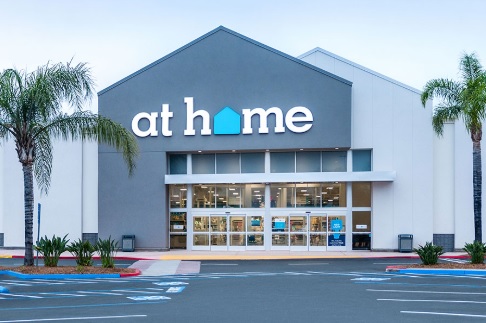
- Strengths:
- A dedicated focus on home décor with a massive selection of styles and categories.
- Perfect for DIY enthusiasts and homeowners looking for variety.
- Weaknesses:
- Prices may be higher than HomeGoods in certain categories.
- Lacks the treasure-hunt excitement that HomeGoods offers.
TJ Maxx/Marshalls
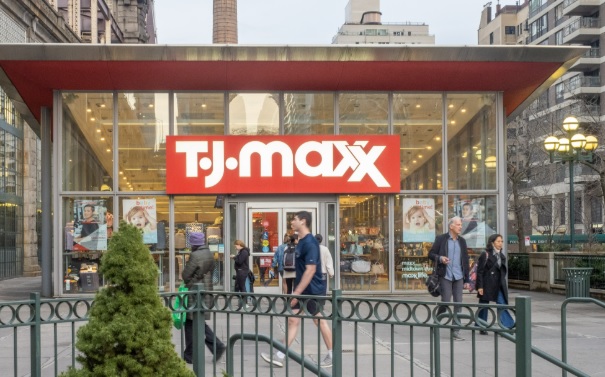
- Strengths:
- Affordable prices and strong brand recognition.
- Offers a wide variety of merchandise, including apparel and home goods.
- Weaknesses:
- Less dedicated to home décor compared to HomeGoods.
- Inventory is unpredictable, similar to HomeGoods.
Bed Bath & Beyond
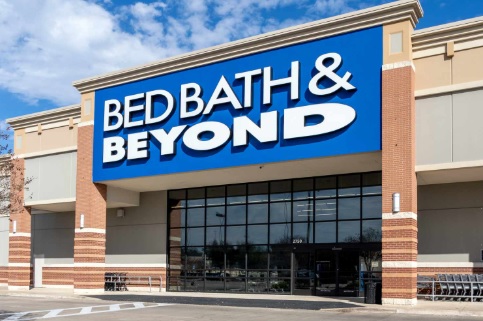
- Strengths:
- Historically strong in bedding, bath, and kitchenware.
- Offers a wide range of products for homeowners.
- Weaknesses:
- Facing financial challenges and restructuring, leading to uncertainty.
- Limited presence compared to other HomeGoods competitors.
IKEA

- Strengths:
- Modern designs at affordable prices.
- Massive selection of furniture and home furnishings.
- Global presence and commitment to sustainability.
- Weaknesses:
- Requires assembly, which can be time-consuming.
- Stores can be overwhelming to navigate for some shoppers.
Wayfair
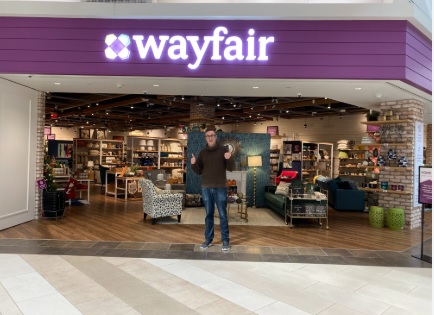
- Strengths:
- Dominates the online home décor market with a vast selection.
- Convenient shopping experience and competitive pricing.
- Weaknesses:
- Quality concerns due to the variety of sellers.
- Shipping times may vary depending on the product.
Amazon

- Strengths:
- Offers a wide range of home goods with fast delivery options.
- Convenient for shoppers who prioritize ease and speed.
- Weaknesses:
- Doesn’t specialize in home décor, so the selection may lack depth.
Target
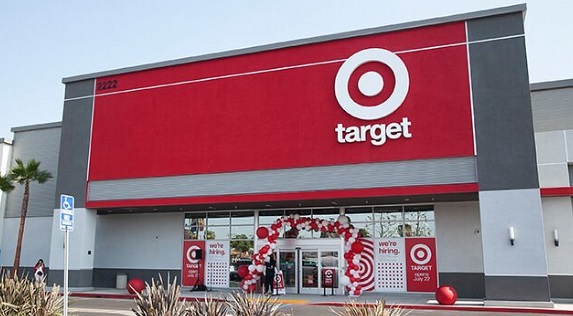
- Strengths:
- Affordable pricing with trendy home décor options.
- Easy access to stores and online shopping.
- Weaknesses:
- Smaller selection compared to dedicated home décor retailers.
Market Share of the Home Goods Alternatives
The home goods retail market is competitive, with major players holding significant shares:
- HomeGoods: ~10% (Strong presence in the home décor market due to its treasure-hunt model).
- At Home: ~8% (Growing rapidly as a dedicated home décor superstore).
- TJ Maxx/Marshalls: ~15% (Combined strength in apparel and home goods).
- Bed Bath & Beyond: ~5% (Declining share due to financial struggles).
- IKEA: ~10% (Global leader in modern furniture).
- Wayfair: ~20% (Dominant online player in home furnishings).
- Amazon: ~15% (Significant online retail presence across all categories).
- Target: ~8% (Strong in affordable home goods and décor).
Investments and Future Plans of the HomeGoods Competitors
HomeGoods (TJX Companies)
HomeGoods continues to focus on expanding its retail presence and enhancing the in-store experience to attract more shoppers.
At Home
At Home is investing in growing its store network and increasing its market share in the home décor superstore segment.
TJ Maxx/Marshalls
These TJX brands are optimizing inventory management and improving the shopping experience across their stores.
Bed Bath & Beyond
Bed Bath & Beyond is implementing restructuring plans to address financial challenges and adapt to changing consumer preferences.
IKEA
IKEA is focusing on sustainability, digital transformation, and expanding its online services to reach more customers.
Wayfair
Wayfair is improving its logistics, enhancing its online platform, and expanding its product catalog to maintain its dominance in the e-commerce space.
Amazon
Amazon continues to innovate with faster delivery options and expanding its home goods category to attract more shoppers.
Target
Target is investing in trendy home décor collections and improving its omnichannel shopping experience.
Head-to-Head Comparisons
- HomeGoods vs. At Home: At Home offers a massive selection of home décor, while HomeGoods provides a treasure-hunt experience with discounted prices.
- HomeGoods vs. Wayfair: HomeGoods is a brick-and-mortar retailer, while Wayfair dominates online shopping with convenience and variety.
- HomeGoods vs. IKEA: IKEA is known for modern furniture and affordability, while HomeGoods focuses on unique, discounted finds.
- HomeGoods vs. Amazon: Amazon offers convenience and fast delivery, while HomeGoods provides an exciting in-store shopping experience.
Conclusion
Home Goods competitors are reshaping the home décor retail landscape, offering a mix of in-store and online shopping experiences. From the treasure-hunt thrills of HomeGoods to the modern designs of IKEA and the convenience of Wayfair, there’s no shortage of options for consumers.
The choice ultimately depends on your priorities—whether you value affordability, variety, convenience, or style. By understanding the strengths and weaknesses of HomeGoods competitors, you can make informed decisions that suit your needs.
No matter where you shop, the home goods market is evolving rapidly, and there’s never been a better time to create a space you love. 😊
FAQs About Home Goods Competitors
Welcome to our FAQ section about Home Goods competitors! If you’re exploring the world of home décor and furnishings, you’ve probably heard of HomeGoods and its unique treasure-hunt shopping experience. But what about its competitors? From superstores to online marketplaces, there are plenty of options to consider when shopping for home goods.
This FAQ is designed to answer all your questions about Home Goods competitors, their strengths, and what makes them stand out. Whether you’re a bargain hunter, a design enthusiast, or just looking for the best deals, we’ve got you covered. Let’s dive in!
Who are Home Goods competitors?
Great question! Home Goods competitors are retailers and marketplaces that offer home décor, furniture, and other household essentials. These competitors range from brick-and-mortar stores to online platforms, each catering to different shopping preferences.
Some of the most notable Home Goods competitors include:
- At Home: A superstore specializing in home décor and furniture.
- TJ Maxx/Marshalls: Sister brands to HomeGoods, offering apparel and home goods at discounted prices.
- Bed Bath & Beyond: Known for bedding, bath, and kitchenware.
- IKEA: A global leader in modern and affordable furniture.
- Wayfair: An online marketplace with a massive selection of home furnishings.
- Amazon: Offers convenience and fast delivery for home goods.
- Target: Affordable home décor and furnishings with a trendy twist.
Each competitor brings something unique to the table, so you’ll have plenty of options to explore.
What makes HomeGoods different from its competitors?
HomeGoods stands out for its treasure-hunt shopping experience. Unlike traditional retailers, HomeGoods offers a constantly changing inventory of discounted home décor, furniture, and seasonal items. Shoppers love the thrill of discovering unique finds at unbeatable prices.
Here’s how HomeGoods compares to its competitors:
- At Home: Offers a larger selection of home décor but lacks the treasure-hunt excitement.
- Wayfair: Focuses on online shopping convenience, while HomeGoods is a brick-and-mortar experience.
- IKEA: Specializes in modern furniture and affordability, while HomeGoods features eclectic and diverse styles.
If you enjoy browsing aisles for one-of-a-kind items, HomeGoods is the place to be!
Which Home Goods competitor is best for online shopping?
When it comes to online shopping, Wayfair and Amazon are the clear winners.
- Wayfair: Known for its massive selection of furniture, décor, and housewares, Wayfair offers competitive pricing and convenient delivery options.
- Amazon: Perfect for fast delivery and a wide range of products, including home goods.
While HomeGoods focuses on in-store shopping, these online competitors provide the convenience of browsing and purchasing from the comfort of your home.
What are the strengths of HomeGoods competitors?
Each competitor has its own strengths, making them appealing to different types of shoppers:
- At Home: Offers a huge selection of home décor and furniture, perfect for DIY enthusiasts.
- TJ Maxx/Marshalls: Affordable prices and a wide variety of merchandise, including apparel and home goods.
- Bed Bath & Beyond: Historically strong in bedding, bath, and kitchenware.
- IKEA: Known for modern designs, affordability, and sustainability.
- Wayfair: Dominates the online market with variety and convenience.
- Amazon: Fast delivery and endless product options.
- Target: Affordable prices with trendy and stylish home décor collections.
The key is to find the retailer that aligns with your needs and shopping style.
Which competitor is best for budget-conscious shoppers?
If you’re shopping on a budget, HomeGoods, TJ Maxx/Marshalls, and Target are excellent options.
- HomeGoods: Offers discounted prices and unique finds, perfect for bargain hunters.
- TJ Maxx/Marshalls: Similar to HomeGoods, these stores provide affordable home goods and apparel.
- Target: Affordable pricing with trendy designs, ideal for shoppers looking for style without breaking the bank.
For online shoppers, Wayfair and Amazon also offer competitive pricing, especially during sales events.
How does IKEA compare to HomeGoods?
IKEA and HomeGoods cater to different types of shoppers:
- IKEA: Focuses on modern and affordable furniture with a minimalist design. It’s perfect for those who love sleek, functional pieces. However, IKEA requires assembly, which can be time-consuming.
- HomeGoods: Offers a diverse range of home décor styles, from eclectic to traditional, with a treasure-hunt shopping experience.
If you’re looking for modern furniture, IKEA is a great choice. But if you want unique décor and discounted prices, HomeGoods is the way to go.
Are Home Goods competitors good for seasonal shopping?
Absolutely! Many Home Goods competitors excel at offering seasonal items:
- HomeGoods: Known for its ever-changing inventory of seasonal décor and holiday items.
- At Home: Offers a wide selection of seasonal decorations, including patio furniture and holiday décor.
- Target: Features trendy seasonal collections at affordable prices.
- Wayfair: Provides online shoppers with a variety of seasonal items, delivered straight to your door.
No matter the season, these competitors have you covered for every holiday or occasion.
Which competitor is best for modern furniture?
If modern furniture is your priority, IKEA and Wayfair are top choices:
- IKEA: Specializes in sleek, functional designs at affordable prices.
- Wayfair: Offers a massive selection of modern furniture from various brands.
While HomeGoods does carry furniture, its focus is more on unique and eclectic pieces rather than modern designs.
Can I find sustainable options with Home Goods competitors?
Yes, sustainability is becoming a key focus for many Home Goods competitors:
- IKEA: Leads the way with its commitment to sustainability, offering eco-friendly furniture and initiatives to reduce waste.
- Target: Features sustainable home goods in its collections.
- Wayfair: Includes eco-friendly options from select sellers.
While HomeGoods doesn’t emphasize sustainability as much, competitors like IKEA and Target are great options for environmentally conscious shoppers.
Are Home Goods competitors expanding their offerings?
Definitely! Many competitors are investing in growth and innovation:
- HomeGoods: Expanding its retail presence and enhancing the in-store experience.
- At Home: Growing its store network and market share.
- Wayfair: Improving logistics and expanding its product catalog.
- IKEA: Focusing on digital transformation and online services.
- Amazon: Constantly expanding its home goods category.
These investments ensure shoppers have more choices and better experiences in the future.
Which competitor is best for convenience?
For convenience, Amazon and Wayfair are unbeatable:
- Amazon: Offers fast delivery and easy returns, making it ideal for last-minute purchases.
- Wayfair: Provides a seamless online shopping experience with a huge selection.
If you prefer in-store shopping, Target and TJ Maxx/Marshalls are great options for quick and easy access to home goods.
What’s the best strategy for shopping with Home Goods competitors?
Here’s a quick tip: Match your shopping style to the retailer!
- If you love discovering unique finds, HomeGoods is perfect for you.
- If you prefer browsing online, Wayfair and Amazon offer convenience and variety.
- If modern furniture is your focus, IKEA is your go-to option.
- If you’re on a budget, Target and TJ Maxx/Marshalls are excellent choices.
By understanding what each competitor offers, you can make the most of your shopping experience.
Final Thoughts
The home goods retail market is packed with incredible options, and Home Goods competitors are constantly innovating to meet the needs of shoppers. Whether you’re looking for discounted finds at HomeGoods, modern furniture at IKEA, or online convenience at Wayfair, there’s a retailer for everyone.
The key is to prioritize what matters most to you—affordability, style, convenience, or sustainability—and choose the competitor that aligns with your needs. With so many options available, creating a beautiful and functional home has never been easier. Happy shopping! 😊
